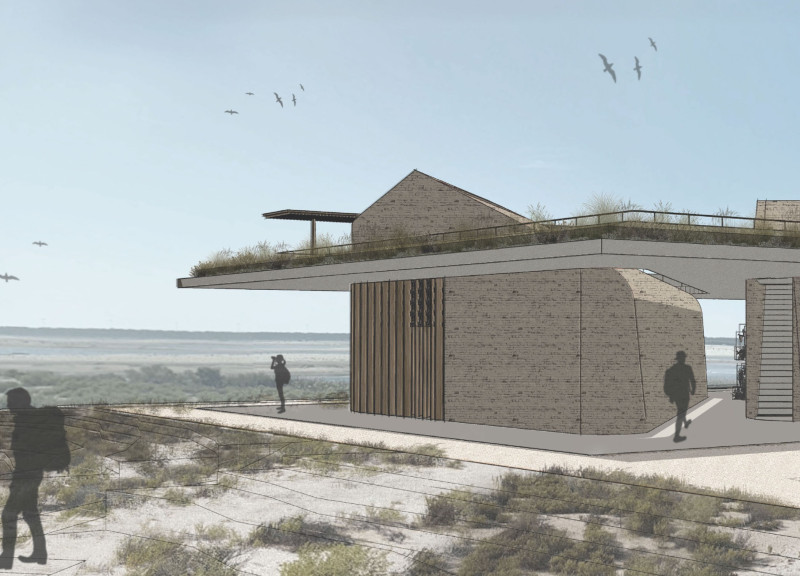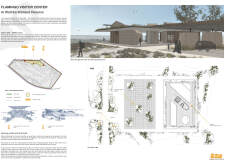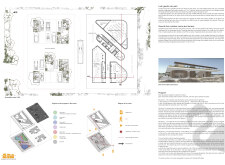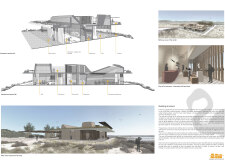5 key facts about this project
At its core, the visitor center represents a commitment to blending built and natural environments. The architectural design conveys harmony with the landscape, utilizing low-profile buildings that seamlessly integrate with the terrain. This approach minimizes visual disruption while enhancing the immersive experience for visitors, allowing them to connect more deeply with the surrounding nature. The building's layout is functional, comprising a reception area, educational exhibits, a café, and observation points, all structured to guide visitors through a journey of discovery about the wetland's rich ecological context.
One of the most distinctive aspects of the project is its dedication to sustainability. The architecture employs locally sourced materials including clay bricks and recycled wood, emphasizing a connection to the region and minimizing the carbon footprint associated with transportation. Additionally, features such as solar panels and natural ventilation systems showcase an intelligent approach to energy efficiency. These sustainable design elements not only reduce reliance on non-renewable resources but also serve as practical educational tools, demonstrating sustainable living principles in action.
The visitor center's design incorporates various interactive spaces that encourage learning and exploration. Educational areas are equipped to host exhibitions and workshops, making the center a hub for community engagement. Viewing platforms and bird hides are strategically placed, allowing visitors to observe the vibrant wildlife without disturbing their habitat. These thoughtful design choices create a dynamic environment where education and nature coexist.
The architectural presentation of the Flamingo Visitor Center is a testament to the importance of contextualizing design within its physical and ecological surroundings. The careful consideration of local climate and landscape has resulted in a facility that not only serves its functional purpose but also embodies a narrative of conservation and stewardship. Visitors are invited to observe, learn, and reflect on their experiences in a setting that enhances their understanding of the complexities of wetland ecosystems.
For those interested in delving deeper into the intricacies of the Flamingo Visitor Center, exploring the architectural plans, sections, and detailed designs will provide further insights into the thought processes guiding this project. These elements highlight the architectural ideas that shaped the final outcome and reflect a commitment to creating spaces that resonate with both visitors and the environment. This perspective encourages a broader dialogue about the role of architecture in fostering connections between people and nature, making the visitor center a notable example of design that respects and celebrates its setting. Additional information about the architectural strategies employed and the functional aspects of the project can significantly enrich one’s understanding of this thoughtfully designed space.


























